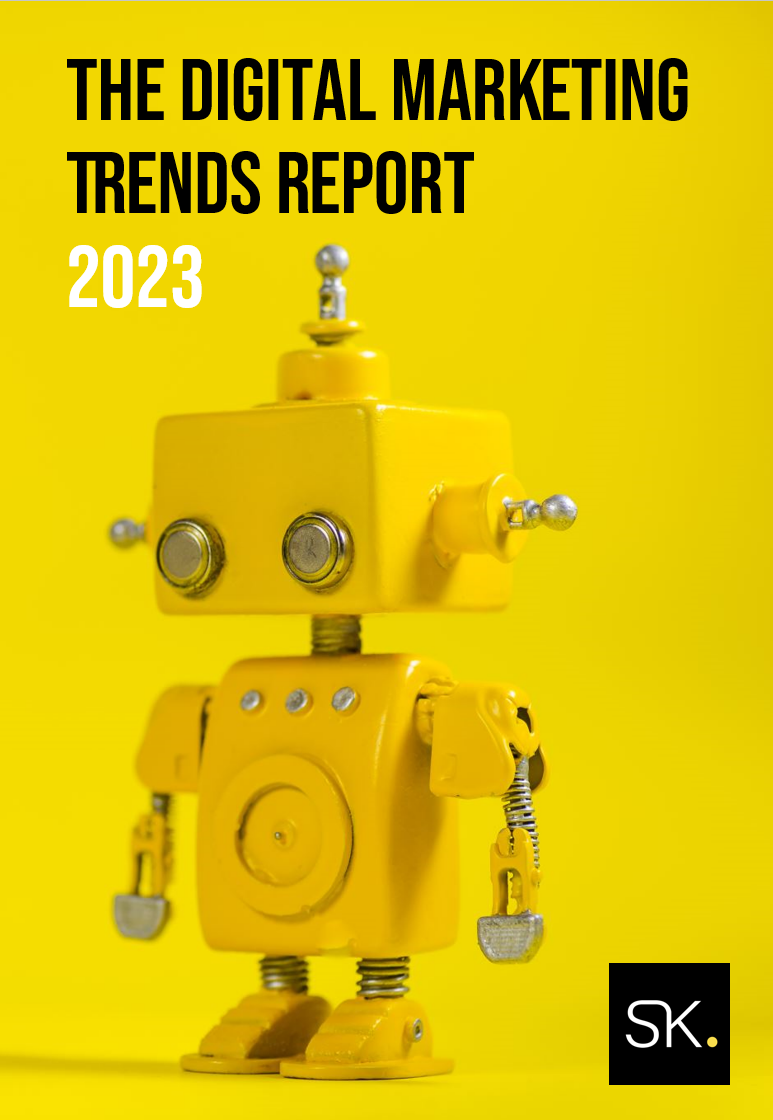Web 3.0 offers a highly personalised user experience that has the potential to change the landscape of digital marketing drastically. Globalnewswire says, The Global Web 3.0 Market Size in 2022 stood at USD 2.2 Billion and is set to reach USD 81.9 Billion by 2032, growing at a CAGR of 44.5%. To stay ahead of the competition and industry changes, businesses must incorporate Web 3.0 marketing into their existing market strategy. This guide offers an in-depth explanation of Web 3.0’s evolution, impacts, and strategies.
What is Web 3.0?
Web3 Marketing is a revolutionary development in the digital marketing space. It goes along with the transition from Web 2.0’s centralised data storage to Web 3.0’s decentralised data storage, which gives people control over their data.
It will use technologies like artificial intelligence (AI), machine learning (ML), big data, decentralised ledger technology (DLT), and more to enable websites and applications to process information effectively and human-like. Some features of Web3 include:
Ubiquity: Ubiquity is the state of being present or capable of being everywhere at once. For instance, an Instagram user may take a photo and publish it, making it omnipresent since it is accessible to everyone who has access to Instagram.
Web3 goes one step further by providing universal access to the Internet at all times and from any location. Internet of Things (IoT) technology will eventually lead to the emergence of several new categories of smart devices so that internet-connected gadgets won’t be limited to computers and smartphones in the future as they were in Web 2.0.
Semantic Web: The study of word relationships is known as semantics. Computers can now analyse a huge amount of Web data, including content, transactions, and relationships between people, thanks to the Semantic Web.
Artificial Intelligence: Artificial intelligence is the capacity of computers to fully understand activities that are traditionally performed by people, such as identifying patterns and making decisions. With AI, Computers would be more human-like and interpret the presented data better, leading to more precise and speedy answers and replies.
Natural Language Processing: Natural Language Processing utilises computers’ capacity to comprehend spoken and written language.
Spatial Web and 3D Graphics: With cutting-edge graphics technology, Web3, the Spatial Web intends to blur the distinction between the physical and the digital by bringing three-dimensional (3D) virtual worlds into sharp relief. And in contrast to its 2D predecessors, 3D visuals provide a new degree of immersion in various fields, including e-commerce, real estate, health, and futuristic gaming apps.
Evolution from Web 1.0 and Web 2.0
We have seen lots of innovation on the web in the past three decades. In the early days of Web 1.0, which was run between 1989-2005), we were only allowed a static HTML web page that could be viewed with the browser. This period was focused on publishing information and making it accessible to a large number of people. Web 2.0 began in 2005 and saw a move towards interactivity and collaboration. This brought about blogs, social media sites, and wikis. This period turned users from passive to active, as they could now create and share content online. We’re currently in the web 3.0 phase, which involves the synergy between humans and machines. The web is evolving to become more intelligent and adaptable with the introduction of new technologies like semantic web, natural language processing, and machine learning. Web 3.0 is therefore seen as the internet’s future.
Implications of Web 3.0 for Marketing
With the changes in Web 3.0, the way marketing operates will be impacted. While this may be somewhat frightening, it could be the beginning of something new in the industry. Here are some implications of Web 3.0 for marketers:
Changes in User Collection and Privacy: The user data that businesses obtain from their customers is a major source of revenue. After there is, the company either sells this data to third parties or uses it for marketing purposes. As a result of Web 3.0’s decentralised structure, it could be more challenging for marketers to get relevant customer data. The acquisition of data by marketers may also require them to be more open about it.
Strategies must be more creative: Marketers must change their strategy to deal with emerging challenges and take advantage of new possibilities. Marketers will need to use a range of new user data sources to provide more individualised, targeted content because the traditional data collection methods, such as third-party cookies, will become outdated.
Content creators will gain more autonomy: Many content creators are limited by their publishing platforms due to the many guidelines. But this will no longer be the case with implementing Web 3.0. On the other hand, marketers can now partner with these content creators to reach their target audience.
Impact on Advertising and Targeting
Web 3.0 will also significantly affect advertising and targeting. And here are some possible outcomes we will see.
More targeted advertising: Businesses can more effectively target specific customers thanks to decentralised technologies. For instance, blockchain-based advertising networks may utilise smart contracts to ensure individuals who fit particular requirements (such as age, interests, geography, or past purchases) see their adverts.
Increased trust: Decentralised platforms may employ blockchain technology to keep data more securely, allowing consumers more control over their data—and a greater sense of trust—instead of depending on centralised servers and businesses to store and access user data.
Improved ROI: By utilising user data to gain a genuine read on ad placements, clicks, and other metrics, decentralised technology may allow improved ad targeting. Additionally, it does away with some of the conventional advertising industry’s middlemen, which lowers transaction costs and ad expenses.
Influencer Marketing in Web 3.0
The synergy of influencer marketing and Web 3.0 produces tons of benefits. Here are a few of them:
Access to a new audience: Influencers may now reach new audiences thanks to the growth of decentralised social media platforms that may not be available on traditional social media platforms.
Authenticity and transparency: Decentralised social media platforms encourage openness and authenticity, which are principles shared by influencer marketing. This can support companies in developing sincere relationships with customers.
Higher engagement and conversion rates: The engagement and conversion rates of influencer marketing campaigns on Web 3.0 platforms tend to be higher than those of traditional advertising, increasing sales and fostering brand loyalty.
Cost-effective: As organisations may collaborate with influencers of different sizes and budgets via Web 3.0 platforms, influencer marketing can be an inexpensive alternative to traditional advertising.
New Marketing Channels and Opportunities
Web 3.0’s marketing development will highlight new platforms and technology as well. Several new technologies and platforms have aided the web3 ecosystem and its uptake. New platforms and technologies that are developing rapidly will also play a role in web3 marketing.
The latest version of Facebook’s services for the web3 environment and many other major software firms is being developed. The brand-new metaverse virtual world experiences would set the new standard for fully digital interactions. And because of the ramifications of the metaverse, web 3.0 marketing would also heavily depend on them. Furthermore, some Web 3.0 marketing strategies include communities, decentralized applications, SEO, and NFTs,
SEO and Web 3.0
SEO and Web 3.0 have diverse speculations. But as long as search engines exist, SEO will remain relevant. Though it may not operate similarly, it would take a new form- voice search. This would create an extremely personalised web experience.
Also, we will see an increase in multimedia methods to search engine optimisation as consumers acquire search preferences (typing, voice). Personalization and content production will be given more attention to target specific people. And understanding context will be necessary to provide accurate results.
Irrespective of this, some drawbacks will still be present in accessibility. Only some devices will have access to the latest technology. Also, although decentralisation is the aim of this phase, it is optional. Controlling and moderating illicit activities will be challenging, even if the platform is decentralised.
Ethical Considerations in Web 3.0 Marketing
Web 3.0 technologies can help us bridge the gap between online privacy and transparency, enabling society to benefit from big data in crucial areas like national security, combating financial crime, and disease cures while upholding the rights and privacy of law-abiding citizens. Instead of carelessly handing over the value of their private data to third-party platforms, as is the current situation, people will increasingly be able to monetize it on a decentralised, secure Web.
Additionally, web3 marketing trends suggest that the customer is in charge. Brands must thus determine precisely what the consumer wants. The most crucial thing is for marketers to give their consumers compelling and distinctive experiences. However, restricted access to consumer data might significantly influence marketers’ plans. Regulatory barriers will also significantly impact web 3.0 marketing in the future. Given the lack of clear criteria for web 3.0, marketers may need to include unclear elements in their plans.
Wrapping Up
The overall image of web3’s potential for marketing shows that the needs of the customer would come first. In the web3 landscape, the emphasis of any new marketing endeavour would be the consumer and their preferences.
To discover how we’re helping businesses worldwide develop leading marketing strategies, contact us – we would be delighted to assist. Start here.



